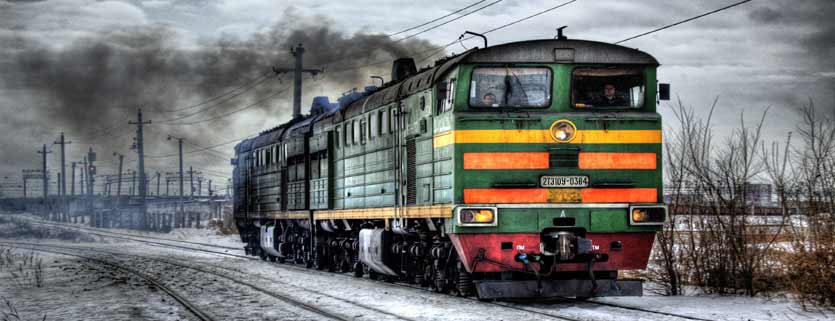Does Russia have the gas Europe needs
It’s one of the most commented topics of the last couple of years. Will Russia provide Europe with all the gas it needs – and whenever the discussion heats up, it veers off into the political realm? I won’t comment on the conflict in Ukraine in this post and not even on Russia’s willingness to use the gas weapon. Those topics have been commented on abundantly and no doubt there will be more.
The one issue that’s left out literally in the cold is – “Will Russia be able to produce all the gas needed in the future?”
What stupid question? Russia is the country with the biggest reserve base on this planet. There is so much of it that buyers of Russian gas are willing to accept the Unified Gas System (UGS) of Russia as the source of their product. Normally, a buyer wants to be sure that the seller is capable of fulfilling his obligations by taking a hard look at the reserve from where the gas is supposed to originate.
If the reserve does not look convincing enough, the buyer would think twice about potentially taking the risk of ending up with a contract that cannot perform for lack of product anymore. The buyer usually makes a lot of expensive decisions upon signing a long-term purchase, so he wants to be sure that there is enough in the ground that makes him not regret his decision later. A reserve certificate would do the trick.
Back to Russia. It’s the one place where you would not get such a reserve certificate. They tell you, that they have so much gas that it’s coming out of their ears so you won’t have to worry about being delivered and hence you won’t need the certificate. Aside from the potential legal problems such a General Supply Clause would potentially entail, it might get exposed to some real supply problems for the first time in almost 50 years of Russian gas delivered to European countries.
Let’s be clear about one thing right now. Russia has not failed us when it comes to gas supply so far. They have sure played around with it willfully and have turned off the tap out of political and strategic calculations. However, at no moment has there been any doubt about their capability to deliver the goods.
Am I crazy to question one of the big constants of European energy right now?
Let’s look at the bare facts. Russia’s hydrocarbon basins can roughly be subdivided into 5 meta-regions – and I am not following conventional wisdom but rather taking a look at the map.
The furthest east is what I would like to call the Pacific Basin. This is essentially the region around the sea of Okhotsk. Distances from Europe are about 8000 km in a straight line and most fields are deep offshore close to the island of Sakhalin, which makes them “LNG only” options. Pipelines are no way to go in this region of the world. Europe won’t see any of this gas except for the occasional LNG cargo perhaps.
Next in line are the Eastern Siberian fields in the Russian Republic of Yakutsk. Notwithstanding the upstream problems in these parts of the world, this basin is on average between 5000 and 6000 km away from Europe and there is no existing pipeline yet. It’s also only between 1000 and 2000 km away from Beijing which means that even if Gazprom gives China large discounts, it would most probably still be the most profitable option. Moreover, construction of the pipeline to China is underway (very, very slowly) so this option goes away as well.
Let’s quickly get the Volga-Ural basin out of the way which is, in fact, a collection of aging fields that are all beyond mature. Not the supply basin Europe should pin its hopes on.
The Arctic supply basin is something of an artificial grouping of fields with little else in common other than being located at the most difficult place for such exploration imaginable. This includes the Shtokman field in the middle of the Barents Sea, the fields offshore the Yamal peninsula in the Kara Sea, and the Lomonosov Ridge cutting the Arctic Ocean in half between the Eurasian Basin and the Amerasian Basin.
Let’s look at Shtokman. That’s a deep sea development where icebergs as big as Luxembourg are a common sight. This means that anything will have to be mobile as sometimes one will have to remove everything until the iceberg has passed. But that’s not the end of problems. It’s also pretty far from the shore which makes sub-sea pipelines necessary to transport the raw gas to the shore. Unfortunately, those big icebergs routinely plow the seafloor when they reach the ground. This leaves scratches that are a couple of meters deep there. This, in turn, means that a very long raw gas pipeline would have to be buried very, very deep in the sea floor for hundreds of km to avoid being ruptured by an iceberg. I am just starting with the bad news. The situation is so bad that even starry-eyed Gazprom considered this field to be for another generation of drillers.
A couple of 1000 km further east there is the Yamal peninsula. An icy wasteland barely a couple of meters above sea level. Drilling cores from the region have sometimes turned out to be close to 70% water. This means that frequently what is supposed to be dry land turns out to be some hybrid onshore/offshore environment that is in a deep freeze during winters and thaws up a couple of meters in the summer making it mosquitoes heaven. The gas fields there are massive but developing some of them requires solutions that are among the most expensive the oil and gas industry has to offer. Hardly a recipe for cheap gas. Novatek has taken the challenge to turn this ice gas into LNG but according to noted specialists, this might well be the most expensive LNG project ever on the face of the earth. And considering the near bankruptcy of some Aussie projects, this has all the hallmarks of a major economic disaster.
There are also the huge gas reserves that are assumed to lie beneath the Lomonosov ridge, a huge undersea mountain range that stretches from Yakutia passing by the North Pole to Greenland. A Russian flag dwells on the seafloor to cement the Russian claims on at least part of this sub-sea territory. But aside from the legal challenges Russia would have to deal with, Lomonosov is about as alien an environment to work with as the surface of a Jovian moon.
Let’s come to the region that has produced the bulk of the Russian gas for the last couple of decades up to this very day – Western Siberia. The centerpiece of the oil and gas producing region is the super field Urengoy. This field alone has been the backbone of the Russian gas industry for decades. The field does not lie at the most inhospitable place on earth but you might be forgiven if you thought it still is. Temperatures can drop to minus 60 degrees Celsius and go up to 40 degrees Celsius in the summer. The field is about 120 km and only the upper layers contained more than 10 trillion m3 of gas when the field was spudded. Farther north lies the Yamburg field that’s nearly as big as Urengoy.
However, those fields have been producing gas for about 50 years now. By oilfield standards, they would already be depleted as oil recovery ratios are much lower than for gas. Both fields are close to their depletion rate of 80%. There are other fields such as Zapolyarnoye or Yuzhno-Russkoye which are still much fuller, but they are also much smaller and can impossibly make up for the shortfall. Not even the Achimov formation in Urengoy with its 2 Trillion cubic meters will make up for the shortfall.
There is more gas in Urengoy but it’s far deeper in the Lower Cretaceous layers at about 3500 m below the surface. They are hard to reach and also hard to exploit as rock layers there tend to be very impermissible. This makes fracturing necessary which has raised hackles in Europe. Besides, fracking at those depths is a technically difficult exercise and on the very expensive side especially in a region where water needs to be warmed to not freeze and for fracking abundant water is necessary.
Gazprom believes that gas production in 2100 will be about the same as today but some specialists think that Russia could have serious gas troubles by 2020. This clean-burning fuel has been consumed at breakneck speed in the past as gas is cheap in Russia. The government keeps prices low to keep its population sweet. Cutting those subsidies back would free up much new gas for export but is unlikely that this will happen in the immediate future.
In the meantime, gas buyers in Europe should reconsider their portfolios. There is still an awful lot of gas to be lifted in Russia but the time of easy gas from Russia is over.
New gas is going to be much more expensive which brings us to the question if this is still the best option for Europe or if LNG is not the more economical solution for the future.
We will find out soon enough. And we have been warned.

















I’ve been working as Chief Geologist and New Ventures Manager in Russia in 2005-2011. Your analysis is correct. We had assets in Western Siberia, I have reviewed practically 90 per cent of vintage seismic in YaNAO and KhMAO Regions (major part of the Western Siberia Basin). We had an asset on Yamal Peninsula, and even we pushed our recklessness to shoot some seismic on Gydan Peninsula. Our CEO was crazy enough to embark on acquisition of assets in Eastern Siberia, close to Kovykta field. This area is a pipe dream. The trouble with these gas assets is that they are located in a region of a very low geothermal gradient, and moreover, in the area of lowest annual mean temperature on surface. The reservoir temperature in the gas-bearing levels is 11 deg. C. Consequently, if you want to produce gas from wells in Kovykta with a sufficiently high production rate, there is so much hydrates that they clog the well. Solution? Inject methanol into the well. To produce it, you’ve got two options: 1st – bring methanol from elsewhere with tremendous difficulties of logistics, we did the exercise, so I am well aware – no roads, no railroads, no product pipelines, and the only river Angara available for fluvial transport in a very short period; 2nd – produce locally methanol from methane by Gas-To-Liquids technology. You will use one third of your gas to produce the amounts of methanol necessary and the costs of your production will skyrocket. That’s why I do not believe in Kovykta or Eastern Siberia as a source of gas to China. For the Chinese, much better option, politically and economically, is to produce their own shale gas or CBM.
Thank you for this great comment. Very valuable. A Russian geologist who knows Yamal told me that they should never have drilled there in the first place – it’s a mess and a financial Black Hole. Who said that shale is expensive. Some years ago I said that the time of easy oil is over. This was right as the new oil and gas is not easy, but technology gets better. When it comes down to technology instead of raw resource, my bets will be with the shale drillers which will evolve much quicker than anyone else. The only thing I say is that Russia might not have enough gas to honor its commitments and that it pays to develop alternatives in order to avoid a headache later.
Your last phrase resumes well the real situation.